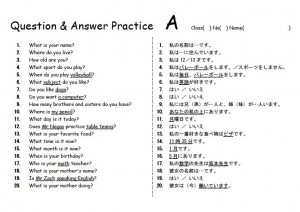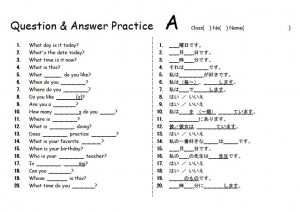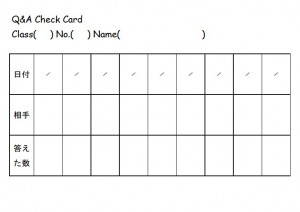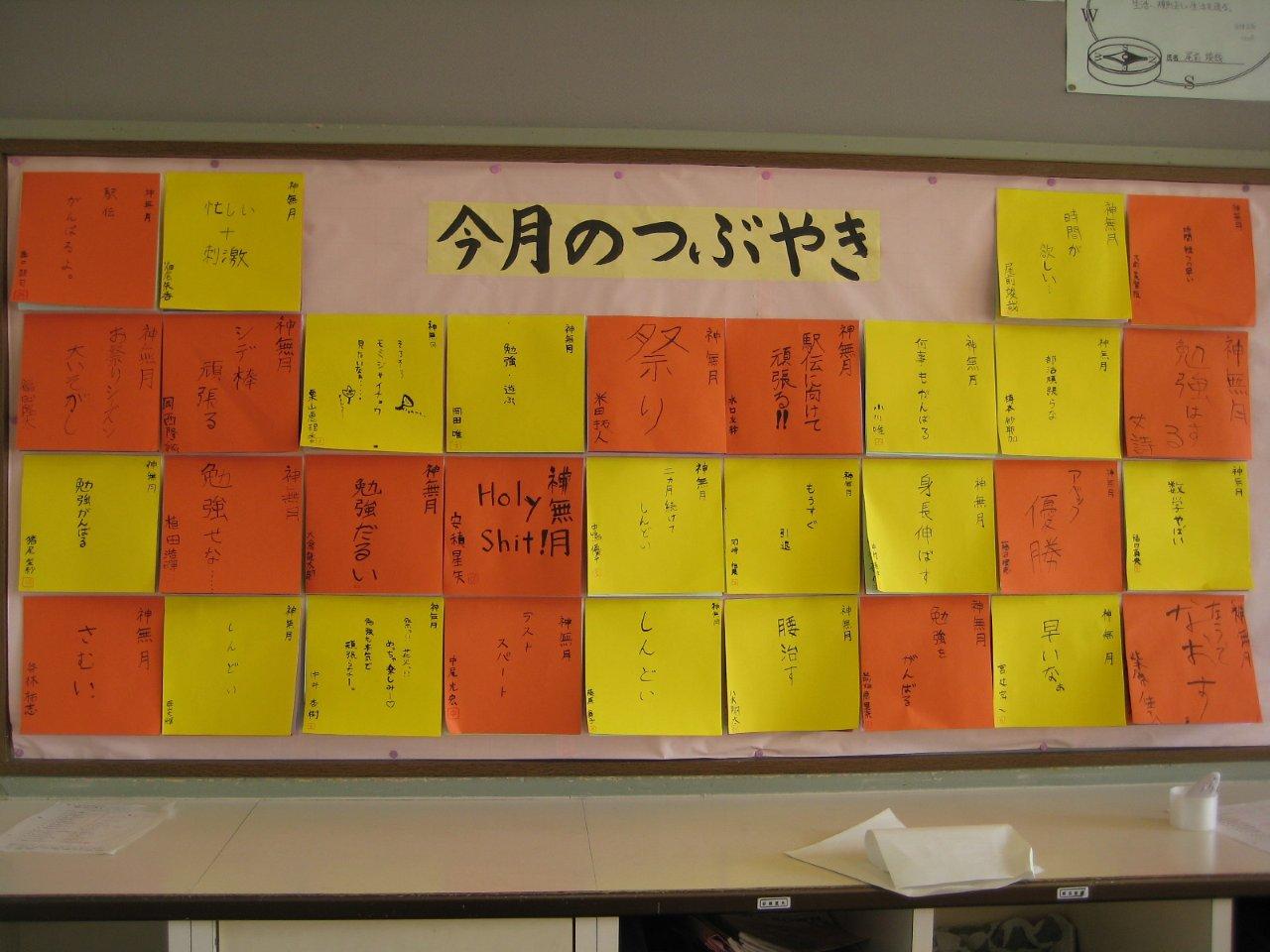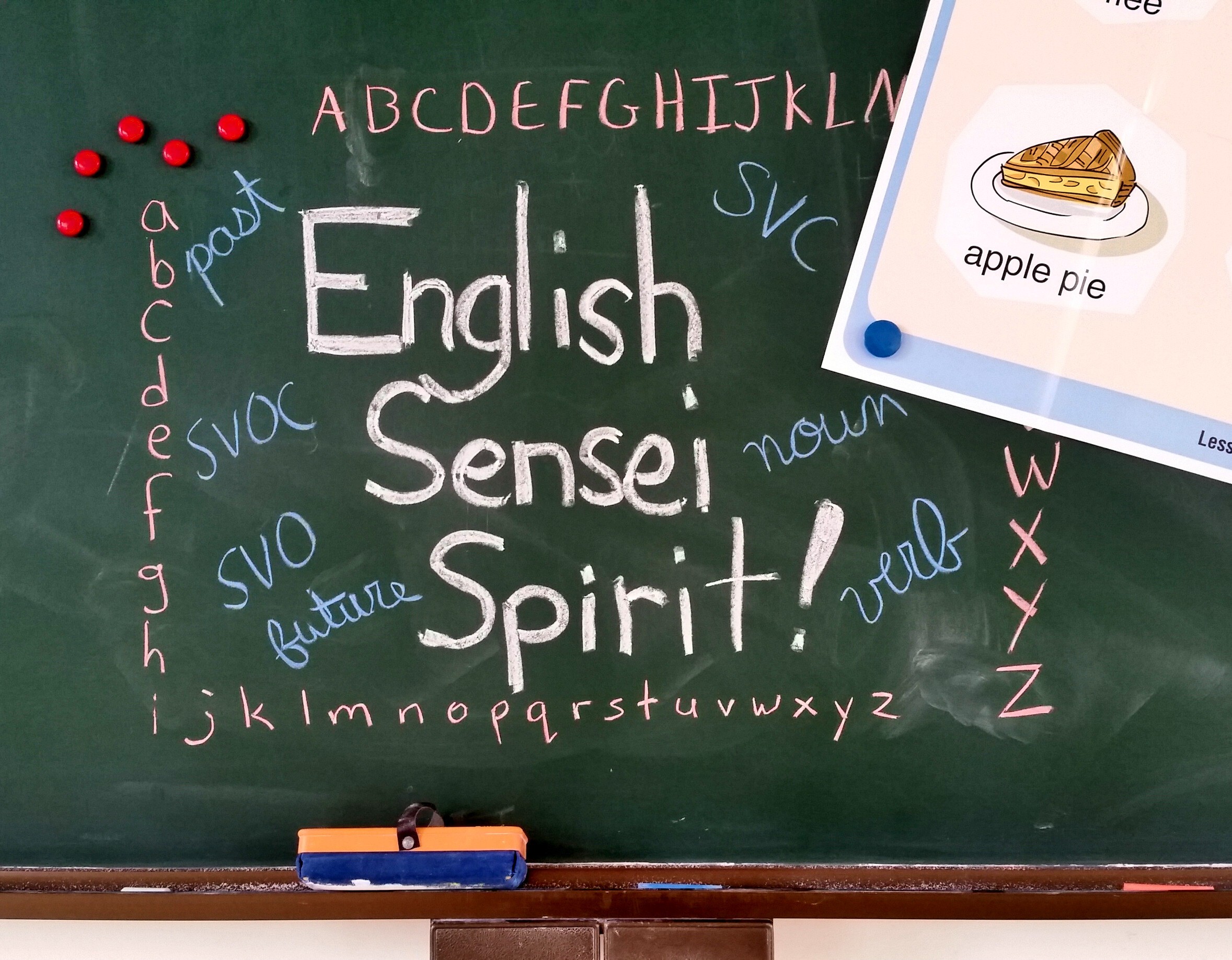English Sensei Spirit: Twenty Questions Daily
(Printouts are at the bottom of the post)
Question and Answer
Daily Speaking Practice
One of the greatest disasters of the Japanese English education system is the lack of speaking and listening practice. Â But with the ever looming “Entrance Exams,” it’s always a question of how?
Students already have too much to memorize and not enough time to memorize it, so how do we take the time to teach listening and speaking skills? Â As a compromise, my school has “Question and Answer” time: 5 minutes out of every class devoted to every student asking and answering 20 questions. This activity aims to improve speaking and listening proficiency, while also providing daily practice for various types of grammar, and is especially useful at reinforcing the basic grammar that tends to be forgotten as things grow more complicated in later years.
This activity will get your kids standing up, moving around a bit, talking, asking questions, and saying silly things. It can be fun. It doesn’t take too much time, but if they do it every day, it sticks! This has worked wonders for my rural middle school students’ speaking skills, so I wanted to share it with everyone.
Time: 5 Minutes
Tools:
-A stop watch
-Pages Q and A for each student
-A “Check sheet” for each student
(see bottom of this page for the downloads)
Process: Every day after “aisatsu”
1) The ALT or JTE yells, “Pull out your Question and Answer Sheets. Stand up and make pairs!”
2) The students quickly find a partner (a different person every day).
3) The students write the date and the name of their partner on the check card. (Of course in romaji! Why are even you asking?!)
4) Check to make sure the students are ready with, “Are you ready?” When they say “Yes!”:
5) “Ready, set, go!” Time the students for 2 minutes.
6) One student asks questions from the question list, the other student answers using the answer list
–>At first, the students may look at the English to ask and answer, but after a week or so, try requiring them to look at the Japanese list while asking or answering in English. They can always flip to the other page to check if they forget.
7) When the 2 minutes are up, say “Stop and switch!”
8) The students who answered questions write down the number they successfully answered.
9) Repeat steps 4-8 with the students’ roles reversed.
Repeat every day!
Note 1: The ALT and/or JTE should walk around the class and correct errors. Â Otherwise the students will get into bad habits (like mine are starting to! Argh!)
Note 2: Just in case this isn’t obvious: be sure to go over all the questions and answers with your students before making them try this.
Goal:
-The goal for the students is to be able to consistently answer all 20 questions in the 2 minutes.
Variations:
As the students advance in years, the number of grammar patterns they know increases rapidly. Â Also, using the same list for more than two months is pretty boring for the students. Â Try updating the list every now and then to keep things interesting and to ensure that students are applying their speaking skills to new grammar patterns.
Click below to download the word documents…

